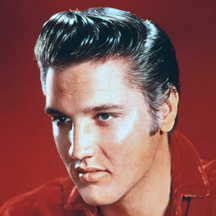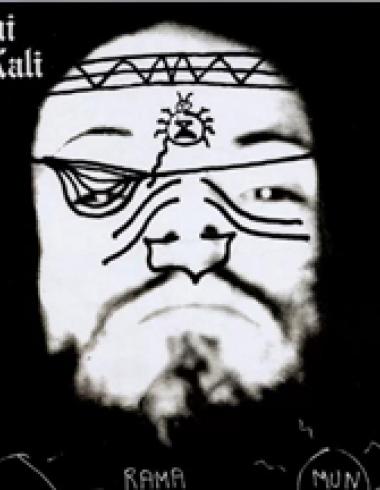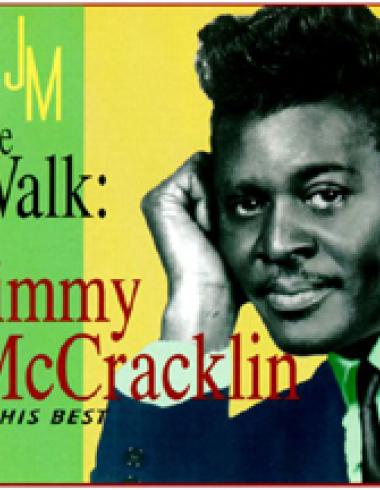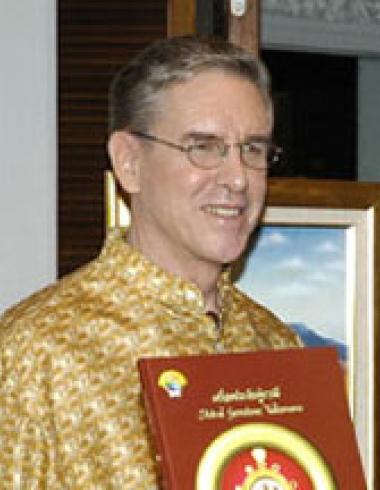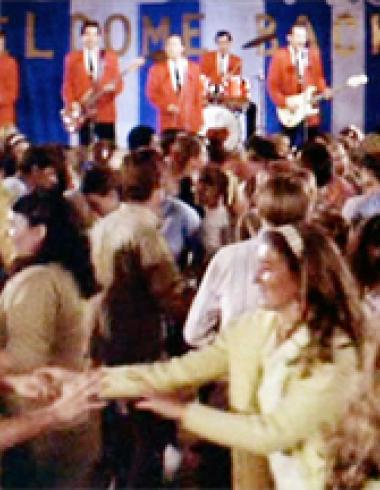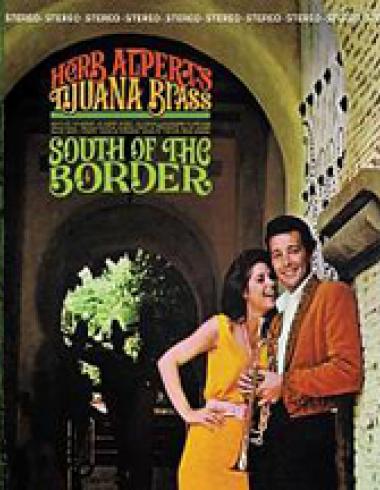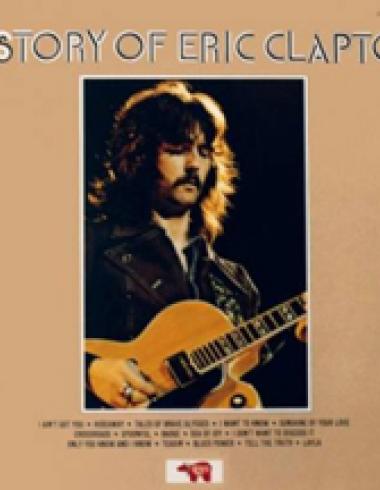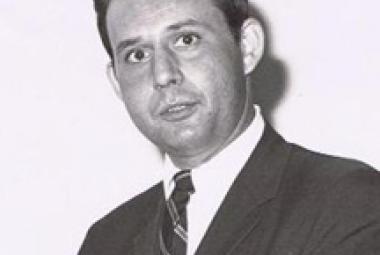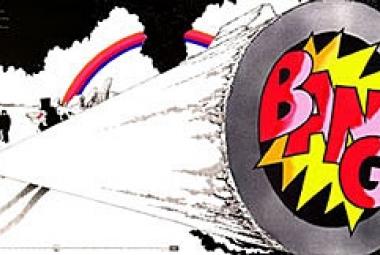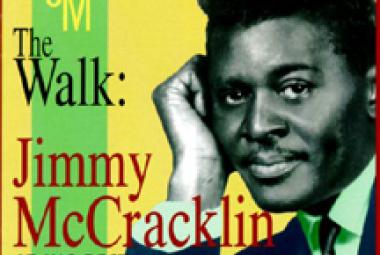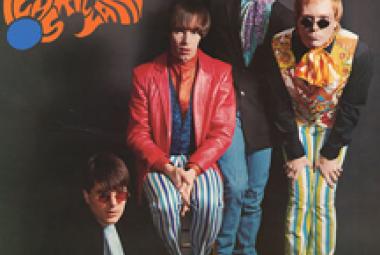Elvis Presley (January 8, 1935 – August 16, 1977) was an American singer and actor. Regarded as one of the most significant cultural icons of the 20th century, he is often referred to as “the King of Rock and Roll”, or simply, “the King”. A native of Tupelo, Mississippi, his music career began in Memphis, Tennessee in 1954, recording at Sun Records with producer Sam Phillips, who wanted to bring the sound of African-American music to a wider audience. Presley’s first RCA single, “Heartbreak Hotel”, was released in January 1956 and became a number-one hit in the United States. In 1958, he was drafted into military service; he resumed his recording career two years later but devoted much of the 1960’s making Hollywood movies and their accompanying soundtrack albums. In 1968, following a seven-year break from live performances, he returned to the stage in the acclaimed televised comeback special Elvis, which led to an extended Las Vegas concert residency and a string of highly profitable tours. Commercially successful in many genres, including pop, blues and gospel, he is the best-selling solo artist in the history of recorded music, with estimated record sales of around 600 million units worldwide. (More from Wikipedia)
You can talk about your pioneers of rock and roll – Chuck Berry, Little Richard, Elvis Presley, James Brown, just to name a few – and you can even bring up your British Invasion greats – the Beatles, the Rolling Stones, the Animals, the Yardbirds, the Kinks, just to name another few. All of them are already in the Rock & Roll Hall of Fame, and deservedly so. However, you can play a lot of more modern rock records all day long and not really discern more than a hint of their direct influence; no question it’s in the DNA, but actual Elvis Presley-style vocals or Chuck Berry guitar licks or James Brown wails are elusive.
That is not so with Link Wray: His influence is front and center on a good 50% of the records that I play, because he is credited with introducing the “power chord” on electric guitar to rock and roll, a technique whose effect is often enhanced by distortion.
Sometime in the 1949 to 1952 period, Bill Haley and the Saddlemen were formed; this was the band that would later evolve into Bill Haley and His Comets. This band recorded a cover version of “Rocket 88” on Holiday Records that was released on June 14, 1951, barely two months after the original release of this song by Ike Turner’s Kings of Rhythm (though this original record was actually credited to Jackie Brenston and His Delta Cats).
Now, Ike Turner’s “Rocket 88” is named by many rock critics and music historians as “the first rock and roll record”; what’s more, “Rocket 88” as recorded by Bill Haley and the Saddlemen is one of the very earliest recordings in what would later become known as “rockabilly”, the musical style pioneered by Elvis Presley and others.
* * *
There are others who helped pave the way for rock and roll as we know it that will have to wait for another time, such as Fats Domino, Pat Boone, the Everly Brothers . . .
Hold on: Pat Boone??? Ladies and Gentlemen, this little series of posts is all about Under-Appreciation; and if there is any 1950’s rock star – maybe any 1950’s musician, period – who is more under-rated today as a performer than Pat Boone (one of the original teen idols), I don’t know who it might be. The “crime” that Boone is accused of – recording white versions of black R&B songs – is what almost every white rock and roll artist in the 1950’s was doing; heading that list is Elvis Presley. And yet Pat Boone is the only one who gets much guff about it. Pat Boone’s extremely clean-cut image works against his legacy in this regard, especially in retrospect.
Pat Boone hit the top of the charts with his second single, “Ain’t That a Shame”, which came out in July 1955 – yeah, a little earlier than you expected I’ll bet. For context, that was just two months after Chuck Berry’s first single, “Maybellene” was released; and Elvis Presley wouldn’t hit #1 until early 1956.
* * *
Writing for Allmusic, rock critic Bruce Eder states his case well: “Buddy Holly is perhaps the most anomalous legend of ’50s rock & roll – he had his share of hits, and he achieved major rock & roll stardom, but his importance transcends any sales figures or even the particulars of any one song (or group of songs) that he wrote or recorded. Holly was unique, his legendary status and his impact on popular music all the more extraordinary for having been achieved in barely 18 months. . . . In a career lasting from the spring of 1957 until the winter of 1958-1959 – less time than Elvis had at the top before the army took him (and less time, in fact, than Elvis spent in the army) – Holly became the single most influential creative force in early rock & roll. . . .
“Holly and the band weren’t afraid to experiment even on their singles, so that ‘Peggy Sue’ made use of the kind of changes in volume and timbre on the guitar that were usually reserved for instrumental records; similarly, ‘Words of Love’ was one of the earliest successful examples of double-tracked vocals in rock & roll, which the Beatles, in particular, would embrace in the ensuing decade.”
* * *
A native of Lubbock, Texas, Buddy Holly initially began performing with his childhood friend Bob Montgomery under the name Buddy and Bob, calling their musical style “western and bop”; they were the opening act for Elvis Presley when he performed in the Lubbock area in 1955. In February 1956, Holly was signed by Decca Records but found the recording environment confining, where he was allowed virtually no input. Buddy Holly was dropped by the label in January 1957 but was still bound by his contract that forbade him to re-record any songs during his stint with Decca for five years, regardless of whether or not they had been released.
* * *
There were indications that Buddy Holly was beginning to eclipse even Elvis Presley in popularity, particularly in England but also in America. For one thing, Buddy Holly and the Crickets toured the United Kingdom for a month in 1958 (they were only the second white rock band to do so), which Elvis never did, at least in those days. Elvis Presley went into the Army in early 1958 – though his record company had plenty of future hits in the can, he was clearly no longer on the scene.
* * *
As important as he is in his home country, the influence of Buddy Holly among British musicians is incalculable. Quoting Bruce Eder again: “The group’s heavy use of rhythm guitar slotted right in with the sound of skiffle music, a mix of blues, folk, country, and jazz elements that constituted most of British youth’s introduction to playing music and their way into rock & roll. Additionally, although he cut an exciting figure on-stage, Holly looked a lot less likely a rock & roll star than Elvis – tall, lanky, and bespectacled, he looked like an ordinary guy who simply played and sang well, and part of his appeal as a rock & roll star was rooted in how unlikely he looked in that role. He provided inspiration – and a way into the music – for tens of thousands of British teenagers who also couldn’t imagine themselves rivals to Elvis or Gene Vincent in the dark and dangerous department. . . . Additionally, although he played several different kinds of guitar, Holly was specifically responsible for popularizing – some would say elevating to mystical, even magical status – the Fender Stratocaster, especially in England.”
* * *
Just 10 days later, the Big Bopper was gone. A briefcase was found in the wreckage that contained lyrics for 20 songs that he was working on. His friend Elvis Presley sent a note of condolence and a guitar-shaped arrangement of yellow roses for the funeral procession.
* * *
Little Richard is another man who helped lay the foundations of rock and roll. His hit songs – “Tutti Frutti”, “Long Tall Sally”, “Slippin’ and Slidin’”, “Jenny, Jenny”, “Ready Teddy”, “Keep a Knockin’”, “Good Golly, Miss Molly”, etc. – are so primal and so ingrained in the rock and roll milieu that it seems like they have always been there. Little Richard (real name: Richard Penniman) is sometimes unfairly dismissed as a one-dimensional shouter, but he brought a passion to his music – and a flamboyant personality to match – that made even Elvis Presley seem tame by comparison. His short stature only exaggerated the vehemence of his performances.
(June 2013/1)
* * *
I did find this brief mention of the song on the Wikipedia article on The Freewheelin’ Bob Dylan: “Unlike the other material which Dylan recorded between 1961 and 1964, ‘Mixed Up Confusion’ attempted a rockabilly sound. Cameron Crowe described it as ‘a fascinating look at a folk artist with his mind wandering towards Elvis Presley and Sun Records.’”
(June 2013/2)
* * *
In 1998, an organization called Native American Music Association & Awards was started in order to bring awareness of the contributions of Native Americans to music in all its forms; the Awards have been presented annually since that time. The surprise at taking even a quick glance at their “Did You Know” roster at www.nativeamericanmusicawards.com/halloffame.cfm is the incredible number of stars of popular music who have Native American blood – the tribe or confederation name(s) are given in parentheses here and elsewhere in this post: Elvis Presley (Cherokee), Jimi Hendrix (Cherokee), Hank Williams (Choctaw), Willie Nelson (Cherokee), Ritchie Valens (Yakui), Aaron Neville and the Neville Brothers (Choctaw/Cherokee), Loretta Lynn and her sister Crystal Gayle (Cherokee), Kitty Wells (Cherokee), Wayne Newton (Powhatan), Michael Jackson and the Jacksons (Choctaw/Cherokee), Link Wray (Shawnee), Richie Havens (Blackfoot), Robbie Robertson of the Band (Mohawk), Tina Turner (Navaho), Cher (Cherokee), Rita Coolidge (Cherokee), Eddie Van Halen of Van Halen (Native Hawaiian – Native Americans who are not among those often called Indians), Tori Amos (Cherokee), Toni Tennille of the Captain and Tennille (Cherokee), Billy Ray Cyrus and his daughter Miley Cyrus (Cherokee), Anthony Kiedis of Red Hot Chili Peppers (Mohican), LL Cool J (Cherokee), Beyoncé (Creole), etc.
Tommy Allsup (Cherokee) was a member of Buddy Holly’s new band in 1959; he “lost” a coin flip with Ritchie Valens and was thus not on board the airplane that crashed on the day the music died.
(August 2013)
* * *
On June 2, 1964, the Soul Agents released their first single on Pye Records, “I Just Wanna Make Love to You” b/w “Mean Woman Blues”. “Mean Woman Blues” is also an oft recorded song; Elvis Presley included “Mean Woman Blues” in the soundtrack for his 1957 film, Loving You (his first starring role in a movie), and “Mean Woman Blues” was the flip side of Roy Orbison’s immortal “Blue Bayou” when the song was originally released in 1963. In the U.K., Cliff Richard and the Shadows had released “Mean Woman Blues” in 1959.
(May 2014)
* * *
“Why Me” was recorded by many others, among them Johnny Cash, Elvis Presley, George Jones, David Allan Coe, Merle Haggard, and Cliff Richard.
* * *
The Imperials (no relation to Little Anthony’s group) were started in 1963 by Jake Hess after he left the venerable Statesmen Quartet. From 1966 to 1971, the Imperials recorded with Elvis Presley and appeared on two of his gospel albums, How Great Thou Art and He Touched Me. In 1969, Elvis hired the Imperials to perform with him as well after his previous background singers, the Jordanaires (also a gospel group) declined to accompany him to Las Vegas and other far-flung places.
* * *
I think of “Put Your Hand in the Hand” as the quintessential early Christian contemporary song. The best known version is by Ocean (from Canada), who reached #2 on the charts with the song in 1971; others who have recorded the song include Elvis Presley, Joan Baez, Frankie Laine, and Loretta Lynn.
The Ice Man Cometh by Jerry Butler proved highly influential; John Bush noted in Allmusic that the album “marks an excellent collaboration, the first time R&B production techniques reached a level of maturity and elegance capable of fully complementing one of the smoothest vocalists in soul history”. In 1969, Elvis Presley recorded one of the hits from The Ice Man Cometh, “Only the Strong Survive”.
(July 2014)
“Move It” was an original song by bandmember Ian “Sammy” Samwell and was first released as the “B” side, with the “A” side being a cover of a song by American artist Bobby Helms called “Schoolboy Crush”. “Move It” went to #2 on the UK charts in 1958 and is widely regarded as the first authentic British rock and roll song. John Lennon has been quoted as saying (from Wikipedia): “Before Cliff [Richard] and the Shadows, there had been nothing worth listening to in British music.” Cliff Richard is the third top-selling singles artist in British history, behind only the Beatles and Elvis Presley.
As Wikipedia notes: “Over a career spanning more than 50 years, [Cliff] Richard has become a fixture of the British entertainment world, amassing many gold and platinum discs and awards, including three Brit Awards and two Ivor Novello Awards. He has had more than 130 singles, albums and EPs make the UK Top 20, more than any other artist, and holds the record (with Elvis Presley) as the only act to make the UK singles charts in all of its first six decades (1950’s – 2000’s). He has achieved 14 UK No. 1 singles (or 18, depending on the counting methodology) and is the only singer to have had a No. 1 single in the UK in 5 consecutive decades: the 1950’s through to the 1990’s.”
(November 2014)
* * *
The first time we all saw hula dancing was on Elvis Presley movies and other Hollywood productions, and it was typically winsome girls wearing grass skirts and small tops and flowered necklaces who were swaying gently to slow background music of no particular distinction. I remember hearing that there was more to hula than that, but it wasn’t until I got to appraise Hilton Hawaiian Village at Waikiki Beach (near Honolulu) that I actually saw how strong and athletic the dancing was (and how there were at least as many men dancing as women) and actually heard the drum-driven music that accompanies that dancing.
It is much the same with surf music; there is no denying the talent and fun of the music by the Beach Boys and Jan & Dean (and former UARB the Rip Chords for that matter), but there is more to the surf sound than that.
* * *
The band heard a track called “Walk, Don’t Run” on an album by country guitar virtuoso Chet Atkins called Hi-Fi in Focus and decided that it would make a great single for the group. The Ventures released “Walk, Don’t Run” on their Blue Horizon label in 1960; it rose to #2 on the charts, behind only “It’s Now or Never” by Elvis Presley. With Howie Johnson as the group’s new drummer, the band put together their excellent first album, also called Walk, Don’t Run. When Mel Taylor joined the Ventures on drums in 1962, Nokie Edwards became the lead guitarist, with Bob Bogle moving to bass guitar.
(December 2014)
* * *
While he was in basic training in San Antonio, Mike Post provided early guidance to the legendary Texas garage rock band the Outcasts; he wrote and produced the band’s first single, “Nothing Ever Comes Easy” b/w “Oriental Express”. He also recruited the Outcasts as the back-up band for performances by Jimmy Carlson (who was active in the New York folk music scene) and by Jimmy Hawkins (a long-time actor who later worked in Elvis Presley films and on The Donna Reed Show).
(January 2015/1)
* * *
Ron Silva and Steve Potterf of the Crawdaddys grew up as neighbors in Point Loma, California and began listening to records together in the ninth grade. Silva recalls of those early days: “After a while Steve started getting into the music I liked – Beatles, early Stones. I remember sitting in his room playing guitars along to my dad’s Chuck Berry and Elvis Presley 45’s.”
(January 2015/2)
* * *
Glen Campbell quickly became highly sought after as a guitarist and played for a wide variety of artists in the 1960’s; Wikipedia lists recordings by Bobby Darin, Rick Nelson, Dean Martin, Nat King Cole, the Monkees, Nancy Sinatra, Merle Haggard, Jan & Dean, Elvis Presley, and Frank Sinatra.
The statistics about the Wrecking Crew are staggering, with various members appearing on tens of thousands of recordings. Hal Blaine is believed to be the most recorded drummer in history, while Tommy Tedesco is said to be the most recorded guitarist. And their talents were not limited to records; again from Wikipedia: “Tedesco’s credits include the iconic brand-burning accompaniment theme from television’s Bonanza, The Twilight Zone, Vic Mizzy’s iconic theme from Green Acres, M*A*S*H, Batman, and Elvis Presley’s ’68 Comeback Special.”
* * *
I was also able to tour the Country Music Hall of Fame Museum, where I learned about the disparate forces leading to what is known as country music: rockabilly from Elvis Presley on down (my favorite form of country and, by now, maybe my favorite form of rock and roll as well), yodeling masters (particularly Jimmie Rodgers, whose 1927 hit “Blue Yodel No. 1 (T for Texas)” was the first half-million-selling country song), honky tonk (the kind of music heard in early country music clubs, as personified by Hank Williams Sr.), mountain folk music (most importantly the Carter Family), Western music (often in the form of singing cowboys like Gene Autry and Roy Rogers – in fact, for many years the genre was called country and western), and Western swing (basically countrified big-band sounds). I don’t know too much about the latter strand, and Jimmie Rodgers is a bit old-fashioned for my tastes (though I have a compilation CD that I sure hope turns up among those remaining to be cleaned up from Katrina); but I have learned enough about the other foundational musicians over the years and other early forms of country to become a major fan.
(February 2015)
* * *
Jerry Leiber and Mike Stoller are another legendary songwriting duo, with Leiber doing the music and Stoller writing the lyrics. They wrote rock standards like “Hound Dog” and “Kansas City”, as well as the Elvis Presley hits “Love Me”, “Jailhouse Rock”, “Loving You”, “Don’t”, and “King Creole”.
(April 2015/1)
* * *
